
The maturing colony was gradually given more self-governance. In 1839, it was renamed the Commonwealth of Liberia; 1841 saw the Commonwealth's first black Governor, J.J. Roberts. By the 1840s, the ACS was effectively bankrupt; Liberia had become a financial burden for it. In 1846, the ACS directed the Americo-Liberians to proclaim their independence. In 1847, Roberts proclaimed the colony the free and independent republic of Liberia. It then counted some 3000 settlers.

Liberia was established by citizens of the United States as a colony for former African American slaves. It is one of only two sovereign states in the world that were started by citizens of a political power as a colony for former slaves of the same political power:

Early times (pre–1821)

Historians believe that many of the indigenous peoples of Liberia migrated there from the north and east between the 12th and 16th centuries AD. Portuguese explorers established contacts with people of the land later known as "Liberia" as early as 1461. They named the area Costa da Pimenta (Pepper Coast) because of the abundance of melegueta pepper. In 1602 the Dutch established a trading post at Grand Cape Mount but destroyed it a year later. In 1663, the British installed trading posts on the Pepper Coast. No further known settlements by non-African colonists occurred along the Grain Coast (an alternative name) until the arrival in 1821 of free blacks from the United States.
Colonization (1821–1847)

From around 1800, in the United States, people opposed to slavery were planning ways to alleviate the problem. Some abolitionists and slaveholders discussed the idea of setting up a colony in Africa for freed African-American slaves. The first ship, Mayflower of Liberia (formerly Elizabeth), departed New York on February 6, 1820, for West Africa, with 86 settlers.[1][2] Between 1821 and 1838, the American Colonization Society developed the first settlement, which would be known as Liberia.[3] On July 26, 1847, it declared its independence.[4]

First ideas of colonization

As early as the period of the American Revolution, many white members of American society thought that African Americans could not succeed in living in their society as free people. Some considered blacks physically and mentally inferior to whites, and others believed that the racism and societal polarization resulting from slavery were insurmountable obstacles for integration of the races. Thomas Jefferson was among those who proposed colonization in Africa: relocating free blacks outside the new nation.[5]
Growing numbers of free blacks
After 1783 the ranks of free blacks expanded markedly, due both to manumission of the enslaved in the South during the first two decades after the Revolutionary War, attributable both to slaveholders inspired by its ideals and to others inspired to manumission by Quaker, Methodist and Baptist preachers active in those years. The Northeast states abolished slavery following the war, generally on a graduated basis where it was still economically viable, as in the mid-Atlantic states.[citation needed]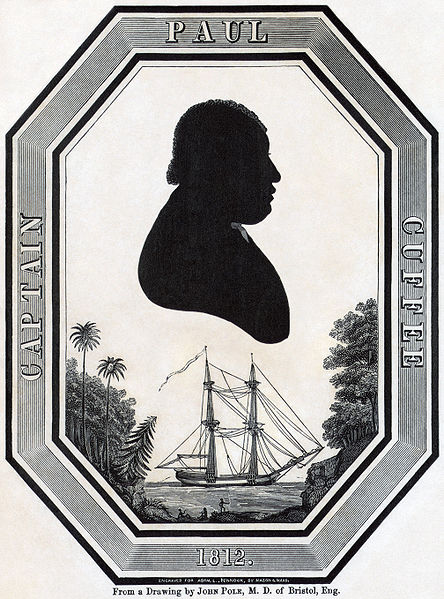
In 1800 and 1802, slave rebellions occurred (see Gabriel’s rebellion) in Virginia, and were brutally suppressed by slaveholders. Some planters feared that free blacks would encourage slaves to run away or revolt. From 1782–1810, the percentage of free blacks in the Upper South increased from less than one percent to 13.5%. In the nation as a whole, the number of free people of color also increased. In 1790, there were 59,467 free blacks, out of a total U.S. population of almost four million and a total black U.S. population of 800,000. By 1800, there were 108,378 free blacks in a population of 7.2 million.[citation needed] These factors significantly influenced the popularity of the concept of colonization as a solution to the problem of free blacks.[citation needed]
Sierra Leone

In 1787, Britain had started to resettle the Black Poor of London in the colony of Freetown in modern-day Sierra Leone, many of whom were Black Loyalists who had been freed in exchange for their services during the American Revolution. The Crown also offered resettlement to former slaves from Nova Scotia. The wealthy African-American shipowner Paul Cuffee thought this was a worthwhile exercise, and with support from certain members of Congress and British officials conveyed 38 American Blacks to Freetown in 1816 at his own expense. Despite such voyages ceasing with his death in 1817, his private initiative served to arouse public interest.[citation needed]

Cape Mesurado

In this same period, on the initiative of the Virginian politician Charles F. Mercer and the Presbyterian minister Robert Finley from New Jersey, in 1817 the American Colonization Society (ACS) was founded. The society aimed to help freed blacks colonize outside of the United States, and supporting them to relocate to Africa.[3]

From January 1820, the ACS sent ships from New York to West Africa. The first had eighty-eight free black emigrants and three white ACS agents on board, who intended to seek an appropriate area to ground a settlement. After several attempts and hardships, ACS representatives in the Nautilus in December 1821 succeeded, perhaps with some threat of force, to buy Cape Mesurado, a 36-mile long strip of land near present-day Monrovia, from the indigenous ruler King Peter.[citation needed]

From the beginning, the colonists were attacked by indigenous peoples, such as the Malinké tribes. In addition, they suffered from diseases, the harsh climate, lack of food and medicine, and poor housing conditions.[6]
Expansion

Up until 1835, five more colonies were started by American Societies other than the ACS, and one by the U.S. government, all on the same West African coast. The first colony on Cape Mesurado was extended, along the coast as well as inland, sometimes by use of force. In 1838 these colonies came together to create the Commonwealth of Liberia. Monrovia would be named the capital.[3] By 1842, four of the other American colonies were incorporated into Liberia, and one was destroyed by indigenous people. The colonists of African-American descent became known as Americo-Liberians. Not only were many racially mixed and of European descent, but their education, religion and culture made them distinct from the indigenous peoples, with whom they did not identify.[citation needed]

Handing over command to Americo-Liberians
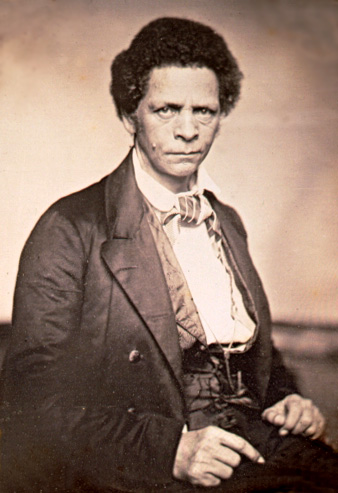
The maturing colony was gradually given more self-governance. In 1839, it was renamed the Commonwealth of Liberia; 1841 saw the Commonwealth's first black Governor, J.J. Roberts. By the 1840s, the ACS was effectively bankrupt; Liberia had become a financial burden for it. In 1846, the ACS directed the Americo-Liberians to proclaim their independence. In 1847, Roberts proclaimed the colony the free and independent republic of Liberia. It then counted some 3000 settlers. A Constitution was drawn up along the lines of that of the United States.[citation needed]
Americo-Liberian Rule (1847–1980)

Between 1847 and 1980, the state of Liberia was governed by the small minority of African-American colonists and their offspring, together called Americo-Liberians, suppressing the large indigenous majority of 95% of the Liberian population. The history of Liberia in this period can be described as four major, intertwined and interacting developments:
- Relations between Americo-Liberians and the indigenous peoples
- Relations between the U.S. and Liberia
- Relations between non-U.S. foreign powers and Liberia
- Liberian economy, industry and natural resources
Relations between Americo-Liberians and the indigenous peoples
Relations between colonists and natives were contentious from the founding of Liberia, and eventually led to the overthrow of the Americo-Liberian regime in 1980.
Resistance
The original inhabitants of the area resented the American settlements and their territorial expansions. They engaged in resistance in all imaginable forms from the inception of colonization until at least 1980.
Americo-Liberian domination and suppression

The Americo-Liberians had been cut off from their African cultural inheritance by the conditions of slavery, and were entirely acculturated to contemporary Euro-America society. They were of mixed African and European ancestry and therefore generally lighter-skinned than the indigenous blacks. Crucially, they had absorbed beliefs in the religious superiority of Protestant Christianity, the cultural superiority of European civilization, and the aesthetic superiority of European skin color and hair texture.

They created a social and material facsimile of American society in Liberia, maintaining their English-speaking, Americanized way of life, and building churches and houses resembling those of the Southern U.S.
The Americo-Liberians never constituted more than five percent of the population of Liberia, yet they controlled key resources that allowed them to dominate the local native peoples: access to the ocean, modern technical skills, literacy and higher levels of education, and valuable relationships with many American institutions, including the American government.

Ironically, one aspect of American society that the Americo-Liberians recreated was a cultural and racial caste system—however, in this case with themselves at the top instead of the bottom. To them, their society must have seemed radically different from the USA because it rejected the ubiquitous Western belief in immutable racial hierarchy, which had led the colonists to despair of life in the USA. They, on the other hand, believed in racial equality, and therefore in the potential of all people to become 'civilized' through evangelization and education. Like many white missionaries before and after them, they were frustrated by the natives' lack of interest in becoming 'civilized.'

Some local people assimilated into Americo-Liberian society, often by marriage. Some entire coastal tribes became Protestants and learned English. But most indigenous Africans kept to their traditional languages and religions. Before long, the Americo-Liberian ruling elite was living rather prosperously, sending their children to America for (often racially segregated) high school and college education, and keeping the indigenous peoples excluded from all political and economic leadership.

Native insurgencies
The Americo-Liberian settlers in 1878 organized their political power in the True Whig Party, which permitted no organized political opposition. Until 1980, the Americo-Liberians firmly held onto their position of authority, meeting with unremitting uprising, rebellion and riots from the native peoples. The United States would, at least until 1915, take sides with the ruling Americo-Liberians in these struggles; European powers would, in the 19th century, stir up internal unrest in Liberia .
1856: war with Grebo and Kru peoples, leading to the last American African colony, Republic of Maryland, joining Liberia. It was annexed into Liberia as Maryland County in 1857.[7][8]

1864: uprisings of inland and coastal tribes (Presidency Benson)
1875–76: war in Cape Palmas (see 1876–78, Presidency Payne-II)
circa 1886: an uprising (Presidency Johnson)



1893: Grebo tribe attacked settlement of Harper (Presidency Cheeseman)
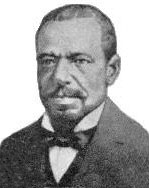
1900: bloody battle (Presidency Coleman)

1915: rebellion of the Kru (Presidency Howard)
1912–20: internal wars (Presidency Howard)

Admonishment from the League of Nations

After 1927, the League of Nations investigated accusations that the Liberian government recruited and sold indigenous people as contract labor or slaves. In its 1930 report the League admonished the Liberian government for "systematically and for years fostering and encouraging a policy of gross intimidation and suppression", “in order to suppress the native, prevent him from realizing his powers and limitations and prevent him from asserting himself in any way whatever, for the benefit of the dominant and colonizing race, although originally the same African stock as themselves”[9] (see also Presidency Charles King 1920–1930). President King hastily resigned.
Social tensions 1940–1980
During World War II thousands of indigenous Liberians came from the nation's interior to the coastal regions in search of jobs. The Liberian Government had long opposed this kind of migration, but was no longer able to restrain it.
In the decades after 1945, the Liberian government received hundreds of millions of dollars of unrestricted foreign investment, which destabilized the Liberian economy. Liberian Government revenue rose enormously, but was being grossly embezzled by government officials. Growing economic disparities caused increased hostility between indigenous groups and Americo-Liberians.

The social tensions led President Tubman to enfranchise the indigenous Liberians either in 1951 or 1963 (accounts differ). Regardless of the date, this was enfranchisement in name only, since Tubman continued to repress political opposition, and to rig elections.

President Tolbert (1971–80) continued to suppress opposition harshly. Dissatisfaction over governmental plans to raise the price of rice in 1979 led to protest demonstrations in the streets of Monrovia. Tolbert ordered his troops to fire on the demonstrators, and seventy people were killed. Rioting ensued throughout Liberia, finally leading to a military coup d'état in April 1980.
Relations between the U.S. and Liberia
During their 133 years in power (1847–1980), the Americo-Liberian ruling class had a complicated relationship with the U.S.U.S. assists Americo-Liberians
The United States had a long history of intervening in Liberia's internal affairs, occasionally sending naval vessels to help the Americo-Liberian (freed slave) ruling minority put down insurrections by indigenous tribes (in 1821, 1843, 1876, 1910, and 1915). By 1909, Liberia faced serious external threats to its sovereignty from the European colonial powers over unpaid foreign loans and annexation of its borderlands.[10]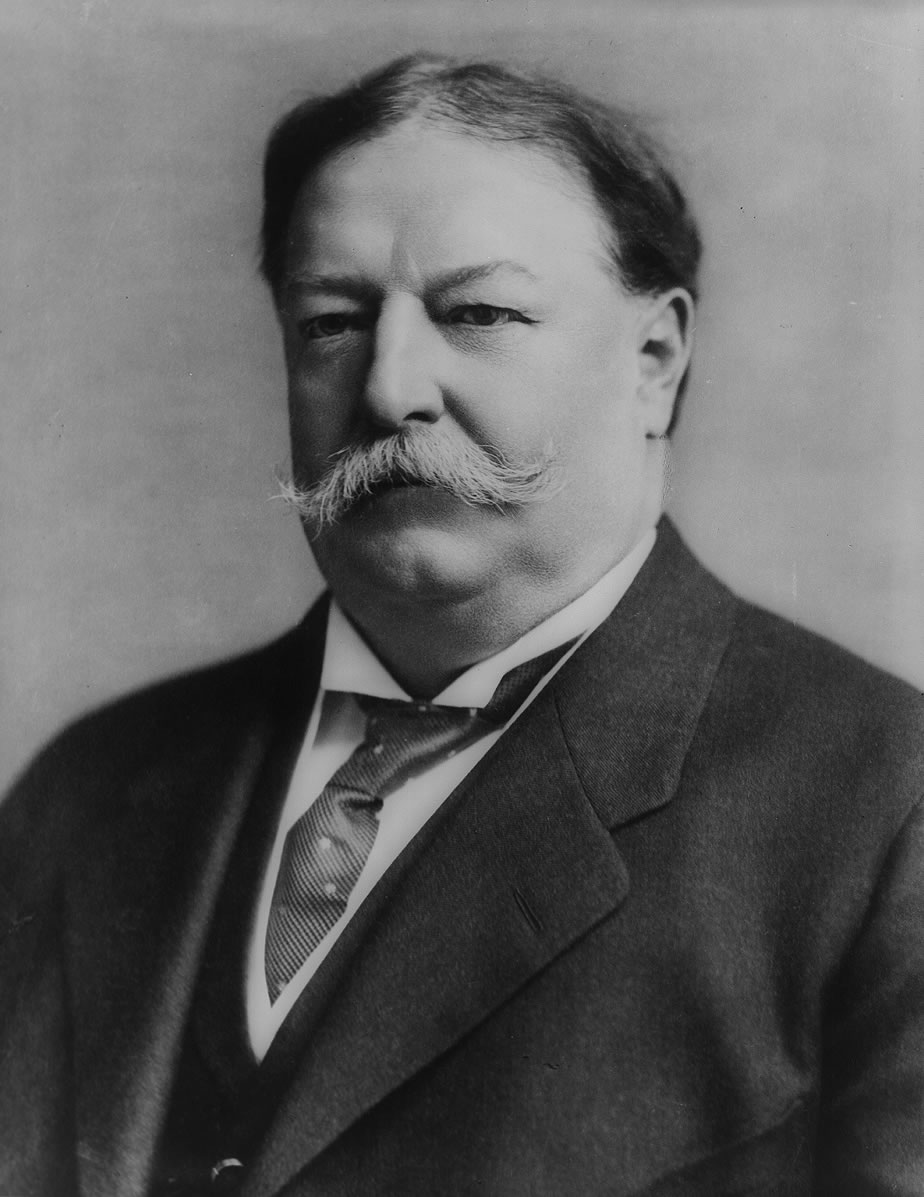
President William Howard Taft devoted a considerable portion of his First Annual Message to Congress (December 7, 1909) to the Liberian question, noting the close historical ties between the two countries that gave an opening for a wider intervention:
"It will be remembered that the interest of the United States in the Republic of Liberia springs from the historical fact of the foundation of the Republic by the colonization of American citizens of the African race. In an early treaty with Liberia there is a provision under which the United States may be called upon for advice or assistance. Pursuant to this provision and in the spirit of the moral relationship of the United States to Liberia, that Republic last year asked this Government to lend assistance in the solution of certain of their national problems, and hence the Commission was sent" across the ocean on two cruisers.[11]

In 1912 the U.S. arranged a 40-year international loan of $ 1.7 million, against which Liberia had to agree to four Western powers (America, Britain, France and Germany) controlling Liberian Government revenues for the next 14 years, until 1926. American administration of the border police also stabilized the frontier with Sierra Leone and checked French ambitions to annex more Liberian territory. The American navy also established a coaling station in Liberia, cementing its presence. When World War I started, Liberia declared war on Germany and expelled its resident German merchants, who constituted the country's largest investors and trading partners – Liberia suffered economically as a result.[12]
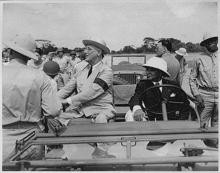
In 1926, the Liberian government gave a concession to the American rubber company Firestone to start the world’s largest rubber plantation at Harbel, Liberia. At the same time, Firestone arranged a $5 million private loan to Liberia. In the 1930s Liberia was again virtually bankrupt, and, after some American pressure, agreed to an assistance plan from the League of Nations. As part of this plan, two key officials of the League were placed in positions to ´advise´ the Liberian government.
War involvement
In World War II, Liberia signed a Defence Pact with the U.S. in 1942, and assured the Americans and their allies of all the supply of natural rubber (a strategic commodity in wartime) that they needed. It also allowed the U.S. to use its territory for military bases, and as a bridgehead for American transports of soldiers and war supplies.[13]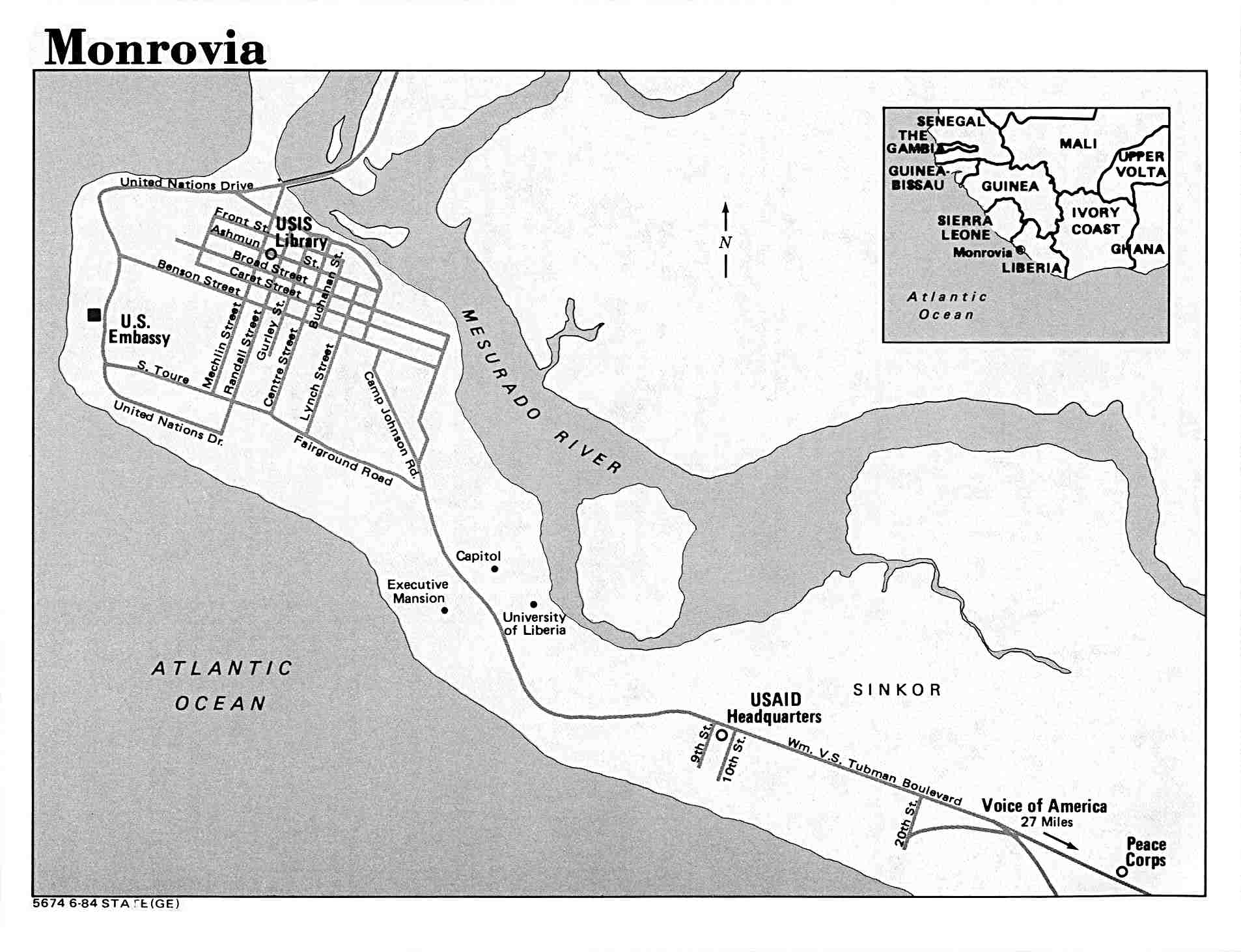
The Defense Areas Agreement between the U.S. and Liberia entailed the US-financed construction of Roberts Field airport, the Freeport of Monrovia, and roads into the interior of Liberia. This agreement is historically regarded as one that reaped benefits for both countries: the US gained a strategic military base in Africa (a continent on which it did not have colonies) during World War II; in terms of benefits for Liberia, the country was promised full control of the airport, seaport, and transportation developments after World War II, under the condition that the revenue from these developments would first be used to pay back the United States. Although Liberia agreed willingly to these developments, the country’s involvement with the United States made it impossible for Liberia to retain its originally-declared neutrality in the war. By the end of World War II, approximately 5,000 American troops had been stationed in Liberia.[14]

While U.S.-Liberian negotiations during World War II are regarded positively, some academics point out that World War II infrastructure developments had unequal gains for the two countries and that while short-run economic benefits for Liberia were clear, long-run benefits were shakier. Arguments substantiating this notion are that World War II infrastructure developments did not positively affect social and political struggles in Liberia and that, decades after the development from World War II, Americo-Liberians disproportionately controlled and benefited from Liberia’s growing economy and increase in foreign investment.[15]
Cold War, foreign investment, exploitation
After World War II, the U.S. positioned Liberia to resist the expansion of Soviet influence in Africa during the Cold War. Liberian president Tubman was agreeable to this policy. Between 1946 and 1960 Liberia received from some $500 million in unrestricted foreign investment, mainly from the U.S. From 1962 to 1980, the U.S. donated $280 million in aid to Liberia. In the 1970s under president Tolbert, Liberia strove for a more non-aligned and independent posture, and established diplomatic relations with the Soviet Union, China, Cuba and Eastern bloc countries. It also severed ties with Israel during the Yom Kippur War in 1973, but kept supporting the U.S. on the Vietnam War.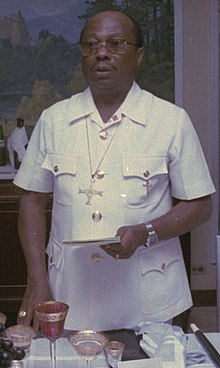
Relations between non-U.S. foreign powers and Liberia
Dubious commerce, military threats
From the founding of Liberia, Europeans had commercial contacts with the nation. During the period 1856–64 European merchants consistently evaded Liberian import and export duties, in which they were supported by their own governments. This practice started or aggravated the financial tightness of the new state. By 1870 Liberia had sunk into financial crisis, which dragged on into the 1930s. Several times the Liberian government borrowed money from English banks on severe terms, and even from local German merchants. In 1912 the U.S. intervened into Liberia’s dire financial situation (see Relations between the U.S. and Liberia).
Between 1878 and 1919 Britain, France and Germany, busy extending their own colonial territories in the region, threatened Liberia militarily, and France and Britain forced Liberia to cede parts of its territory to them (1883, 1885, 1892, 1903, 1919). Only after 1892 were Liberia's borders officially negotiated with these European powers.[7] The British (in 1875) and French (in 1886) are also alleged to have fuelled internal Liberian uprisings and wars.[citation needed] From 1878 onwards Liberian presidents regularly called for more foreign trade and more foreign investment in Liberia.
Two World Wars
Between 1910 and 1943 Germany was Liberia’s major trading partner. In World War I, Liberia nevertheless tended to support the Allies, partly because it was French and British colonial territories that surrounded Liberia but also because Allied control of the Atlantic sea lanes made continued trade with Germany unviable. As a result Germany withdrew business from Liberia, causing Liberian customs revenue to decrease significantly. In the 1930s Dutch, Danish, German and Polish investors signed agreements for economic activities. In the Second World War, the U.S. pressured Liberia to side with the Allies, and to expel all German citizens and business representatives in 1944. This would have again significantly disturbed the Liberian economy, but America had already in 1942 begun investing substantially in Liberia, in projects related to America’s war effort.
Large scale investments
Between 1945 and 1980, the posture of Western European states towards Liberia was largely that of the U.S.. Americo-Liberian rulers received hundreds of millions of dollars in unrestricted foreign investment, mainly from the U.S., but also from Western Europe. Many Western politicians courted president Tubman.Liberian rulers also built up ties with the Soviet bloc and other powers, striving for an independent position in world politics, as far as their strong bonds with the Western world allowed them to.

Liberian economy, industry and natural resources
The Liberian economy between 1847 and 1980 expanded from primitive agriculture, through large scale rubber industry, to exploitation of mineral resources and rendering services.Agriculture

From its foundation, Liberia had flourishing trade contacts in West Africa, and soon started trading with Europeans. Primary export products were coffee, rice, palm oil, palm kernels, piassava, sugarcane and (hardwood) timber. Shipbuilding was important, until it declined in the 1870s with the competition from steamships. Also in the 1870s competition from Brazilian coffee and European sugar beets caused a decline in Liberian exports. Liberia then tried to modernize its largely agricultural economy. President Gardiner (1878–83) called for increases of foreign trade and investment. President Coleman (1896–1900) considered the future of Liberia to depend on exploitation of the resources of Liberia’s interior. President Gibson (1900–04) granted rights to Union Mining Company to investigate the hinterland for minerals. During World War I, Germany, at that time Liberia’s major trading partner, withdrew from the country, causing Liberian customs revenue to decrease. Additionally a German submarine blockade of Liberia caused trade with Britain, France and the U.S. to decrease to negligible amounts.

Natural resources
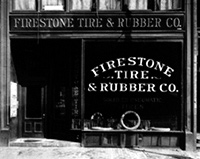
In 1926, Firestone, an American rubber company, started the worlds largest rubber plantation in Liberia. This industry created 25,000 jobs, and rubber quickly became the backbone of the Liberian economy; in the 1950s, rubber accounted for 40 percent of the national budget. In the 1930s, Liberia signed concession agreements with Dutch, Danish, German and Polish investors.[16] In World War II, rubber was strategically important, and Liberia assured the U.S. and its allies of all the natural rubber they needed. Also, Liberia allowed the U.S. to use its territory as a bridgehead for transports of soldiers and war supplies, to construct military bases, airports, the Freeport of Monrovia, roads to the interior, etc. The American military presence boosted the Liberian economy; thousands of laborers descended from the interior to the coastal region. The country’s huge iron ore deposits were made accessible to commerce.

Between 1946 and 1960, the Liberian government attracted $500 million in foreign investment, mainly American, partly also from multinational corporations. By 1971, this amounted to more than $1 billion. Exports of iron, timber and rubber rose strongly. In 1971, Liberia had the world’s largest rubber industry, and was the third largest exporter of iron ore. Other mineral deposits also generated state income. From 1948 Ship registrations became another large new source of state revenue. From 1962 until 1980, the U.S. donated $280 million in aid to Liberia, in exchange for which Liberia offered its land free of rent for U.S. government facilities.


Samuel Doe and the People’s Redemption Council (1980–1989)
After a bloody overthrow of the Americo-Liberian régime by indigenous Liberians in 1980, a ‘Redemption Council’ took control of Liberia. Internal unrest, opposition to the new military regime, and governmental repression steadily grew, until in 1989 Liberia sank into outright tribal and civil war.
Coup d’état; relations with U.S.





Doe quickly established good relations with the United States, especially after U.S. President Ronald Reagan took office in 1981. Reagan increased financial aid for Liberia, from the $20 million it had been in 1979, to $75 million, and later $95 million per year. Liberia became again an important Cold War ally of the U.S.. Liberia served to protect important U.S. facilities and investments, and to counter the perceived spread of Soviet influence in Africa. Doe closed the Libyan mission in Monrovia and even severed diplomatic relations with the Soviet Union. He agreed to a modification of the mutual defence pact with the U.S. granting staging rights on 24-hour notice at Liberia's sea- and airports for the U.S. Rapid Deployment Forces. Under Doe, Liberian ports were opened to American, Canadian, and European ships, which brought in considerable foreign investment from shipping firms and earned Liberia a reputation as a tax haven.

Fear of counter-coup; repression
Doe overcame seven coup attempts between 1981 and 1985. In August 1981 he had Thomas Weh Syen and four other PRC members arrested and executed for allegedly conspiring against him. Then Doe’s government declared an amnesty for all political prisoners and exiles, and released sixty political prisoners. Soon there were more internal rifts in the PRC. Doe became paranoid about the possibility of a counter-coup, and his government grew increasingly corrupt and repressive, banning political opposition, shutting down newspapers and jailing reporters. He began to systematically eliminate PRC members who challenged his authority, and to place people of his own ethnic Krahn background in key positions, which intensified popular anger. Meanwhile, the economy deteriorated precipitously. Popular support for Doe's government evaporated.1985 presidential election
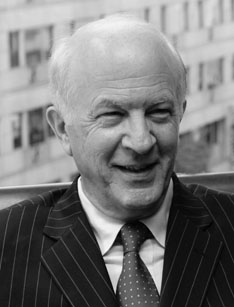
Repression escalates into tribal warfare
In November 1985 Thomas Quiwonkpa, Doe’s former second-in-command, with an estimated 500 to 600 people, failed in an attempt to seize power; all were killed. Doe was sworn in as President on January 6, 1986. Doe then initiated crackdowns against certain tribes, such as the Gio (or Dan) and Mano, in the north, where most of the coup plotters came from. This government's mistreatment of certain ethnic groups resulted in divisions and violence among indigenous populations, who until then had coexisted relatively peacefully. In the late 1980s, as fiscal austerity took hold in the United States and the perceived threat of Communism declined with the waning of the Cold War, the U.S. became disenchanted with Doe's government and began cutting off critical foreign aid to Liberia. This, together with the popular opposition, made Doe’s position precarious.
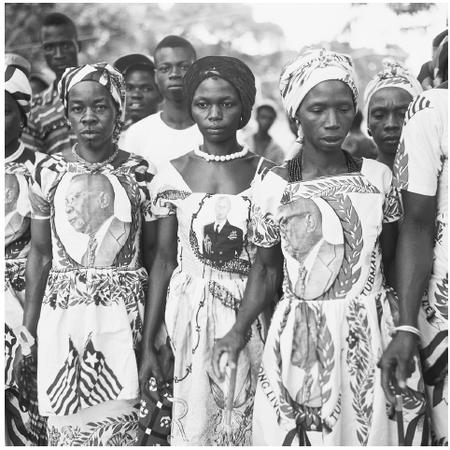
Nonetheless, the Krahn tribe of president Doe attacked tribes in Nimba County in the north; some northerners fled to bordering Côte d’Ivoire (Ivory Coast). In the late 1980s, Charles Taylor assembled rebels from Gio and Mano tribes in Ivory Coast into a militia, invaded Nimba County in 1989, and by 1990 a full-blown tribal war was taking place.
First Liberian Civil War (1989–1996)
In the late 1980s opposition from abroad to Doe’s regime led to economic collapse. Doe had already been repressing and crushing internal opposition for some time, when in November 1985 another coup attempt against him failed. Doe retaliated against tribes such as the Gio (or Dan) and Mano in the north, where most of the coup plotters had come from. Perhaps as a sequel to these governmental retaliations, perhaps as another circumscription of these same events: Doe’s Krahn tribe began attacking other tribes, particularly in Nimba County in the northeast of Liberia, bordering on Côte d’Ivoire (Ivory Coast) and on Guinea. Some Liberian northerners fled brutal treatment from the Liberian army into the Ivory Coast.

Charles Taylor and the NPFL 1980–’89
Charles Taylor, born 1948, is son to a Gola mother and either an Americo-Liberian or an Afro-Trinidadian
father. Taylor was a student at Bentley College in Waltham,
Massachusetts, U.S.A., from 1972 to 1977, earning a degree in economics.
After the 1980 coup d’état he served some time in Doe’s
government until he was sacked in 1983 on accusation of embezzling
government funds. He fled Liberia, was arrested in 1984 in Massachusetts
on a Liberian warrant for extradition, and jailed in Massachusetts;
escaped from jail in 1985, and probably fled to Libya. Some time later, while in the Ivory Coast, Taylor assembled a group of rebels into the National Patriotic Front of Liberia (NPFL), mostly from the Gio and Mano tribes.
War
December 1989, NPFL invaded Nimba County in Liberia. Thousands of Gio and Mano joined them, Liberians of other ethnic background as well. The Liberian army (AFL) counterattacked, and retaliated against the whole population of the region. Mid 1990, a war was raging between Krahn on one side, and Gio and Mano on the other. On both sides, thousands of civilians were massacred.1990–1991
By the middle of 1990, Taylor controlled much of the country, and by June laid siege to Monrovia. In July, Yormie Johnson split off from NPFL and formed the Independent National Patriotic Front of Liberia (INPFL), based on the Gio tribe. Both NPFL and INPFL continued siege on Monrovia. Bloodshed was all over.In August 1990, the Economic Community of West African States (ECOWAS), an organisation of West African states, created a military intervention force called Economic Community of West African States Monitoring Group (ECOMOG) of 4,000 troops, to restore order. President Doe and Yormie Johnson (INPFL) agreed to this intervention, Taylor didn’t. On September 9, President Doe paid a visit to the barely established headquarters of ECOMOG in the Free Port of Monrovia, was at the ECOMOG headquarters attacked by INPFL, taken to the INPFL’s Caldwell base, tortured and killed.
November 1990, ECOWAS agreed with some principal Liberian players but without Charles Taylor, on an Interim Government of National Unity (IGNU) under President Dr. Amos Sawyer. Sawyer established his authority over most of Monrovia, with the help of a paramilitary police force, the 'Black Berets', under Brownie Samukai, while the rest of the country was in the hands of the various warring factions.

June 1991, former Liberian army fighters formed rebel group United Liberation Movement of Liberia for Democracy (ULIMO), entered western Liberia in September ’91, and gained territories from the NPFL.
1993–1996
1993, ECOWAS brokered a peace agreement in Cotonou, Benin. On September 22, 1993, the United Nations established the United Nations Observer Mission in Liberia (UNOMIL) to support ECOMOG in implementing the Cotonou agreement. March 1994, the ‘interim government’ of Sawyer was succeeded by a Council of State collective presidency of six members headed by David D. Kpormakpor. May 1994, renewed armed hostilities broke out and held on. Somewhere 1994, ULIMO broke into two militias: ULIMO-J, a Krahn faction led by Roosevelt Johnson and ULIMO-K, a Mandigo-based faction under Alhaji G.V. Kromah. September ’94, factional leaders agreed to the Akosombo peace agreement in Ghana, but to little consequence. October ‘94, the UN reduced its number of UNOMIL observers to about 90 because of the lack of will of combatants to honour peace agreements. December ’94, factions and parties signed the Accra agreement, but fighting continued. August 1995, factions signed an agreement largely brokered by Jerry Rawlings, Ghanaian President; Charles Taylor agreed. September ’95, Kpormakpor’s Council of State is succeeded by one under civilian Wilton G. S. Sankawulo and with the factional heads Charles Taylor, Alhaji Kromah and George Boley in it. April 1996, followers of Taylor and Kromah assaulted the headquarters of Roosevelt Johnson in Monrovia, and the peace accord collapsed. In August ’96, a new ceasefire is reached in Abuja, Nigeria. September 3, 1996, Ruth Perry followed Sankawulo as chairwoman of the Council of State, with the same three militia leaders in it.
Second Liberian Civil War (1997–2003)

Elections 1997
1997–1999
Bloodshed in Liberia did slow considerably, but it did not end. Violence kept flaring up. During his entire reign, Taylor had to fight insurgencies against his government. Suspicions were, Taylor continued to assist rebel forces in neighbouring countries, like Sierra Leone, trading weapons for diamonds.1999–2003
Some ULIMO forces reformed themselves as the Liberians United for Reconciliation and Democracy (LURD), backed by the government of neighbouring Guinea. In 1999, they emerged in northern Liberia, in April 2000 they started fighting in Lofa County in northernmost Liberia. By the spring of 2001 they were posing a major threat to the Taylor government. Liberia was now engaged in a complex three-way conflict with Sierra Leone and the Guinea Republic.Meanwhile, the United Nations Security Council in March 2001 (Resolution 1343)[18] concluded that Liberia and Charles Taylor played roles in the civil war in Sierra Leone, and therefore:
- banned all arms sales to, and diamonds sales from Liberia; and
- banned high Liberian Government members to travel to UN-states.
Other elements of the former ULIMO-factions formed another new rebel group, the Movement for Democracy in Liberia (MODEL). Early 2003, MODEL emerged in the south of Liberia.
Another UN embargo, and arrest warrant against Taylor
On March 7, 2003, the war tribunal Special Court for Sierra Leone (SCSL) decided to summon Charles Taylor and charge him with war crimes and crimes against humanity, but they kept this decision and this charge secret until June that year.[24]May 6, 2003, the UN Security Council (Resolution 1478) decided to an embargo also on Liberian “round logs and timber products”.[25]
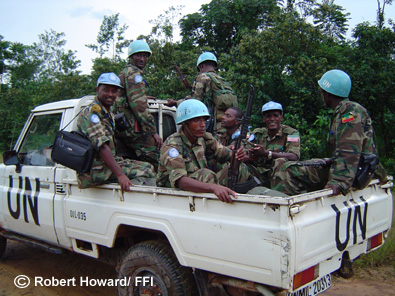
By mid-2003, LURD controlled the northern third of the country and was threatening the capital, MODEL was active in the south, and Taylor's government controlled only a third of the country: Monrovia and central Liberia.
On June 4, 2003, ECOWAS organized peace talks in Accra, Ghana, among the Government of Liberia, civil society, and the rebel groups LURD and MODEL. On the opening ceremony, in Taylor’s presence, the SCSL revealed their charge against Taylor which they had kept secret since March, and also issued an international arrest warrant for Taylor.[24] The SCSL indicted Taylor for “bearing the greatest responsibility” for atrocities in Sierra Leone since November 1996. The Ghanaian authorities did not attempt to arrest Taylor, declaring they could not round up a president they themselves had invited as a guest for peace talks.[24] The same day, Taylor returned to Liberia.
Pressure of rebels, Presidents, and UN: Taylor resigns
June 2003, LURD began a siege of Monrovia. July 9, the Nigerian President offered Taylor safe exile in his country, if Taylor stayed out of Liberian politics.[26] Also in July, American President Bush stated twice that Taylor “must leave Liberia”. Taylor insisted that he would resign only if American peacekeeping troops were deployed to Liberia. August 1, 2003, the Security Council, (Resolution 1497) decided on a multinational force in Liberia, to be followed-on by a United Nations stabilization force. ECOWAS sent troops under the banner of 'ECOMIL' to Liberia.[27] These troops started to arrive in Liberia probably as of August 15. The U.S. provided logistical support.[28] President Taylor resigned, and flew into exile in Nigeria. Vice-President Moses Blah replaced Taylor as interim-President. A ECOWAS-ECOMIL force of 1000 Nigerian troops was airlifted into Liberia on August 15, to halt the occupation of Monrovia by rebel forces. Meanwhile, U.S. stationed a Marine Expeditionary Unit with 2300 Marines offshore Liberia.
Peace agreement and transitional government (2003–2005)
On August 18, 2003, the Liberian Government, the rebels, political parties, and leaders from civil society signed the Accra Comprehensive Peace Agreement that laid the framework for a two-year National Transitional Government of Liberia. August 21, they selected businessman Charles Gyude Bryant as Chair of the National Transitional Government of Liberia (NTGL), effective on October 14. These changes paved the way for the ECOWAS peacekeeping mission to expand into a 3,600-strong force, constituted by Benin, Gambia, Ghana, Guinea-Bissau, Mali, Nigeria, Senegal and Togo.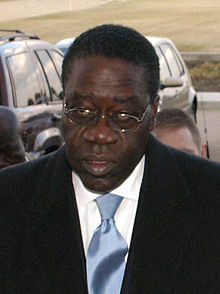
On October 1, 2003, UNMIL took over the peacekeeping duties from ECOWAS. Some 3,500 West African troops were provisionally ‘re-hatted’ as United Nations peacekeepers. The UN Secretary-General commended the African Governments who have contributed to UNMIL, as well as the United States for its support to the regional force. October 14, 2003, Blah handed power to Charles Gyude Bryant.

Fighting initially continued in parts of the country, and tensions between the factions did not immediately vanish. But fighters were being disarmed; in June 2004, a program to reintegrate the fighters into society began; the economy recovered somewhat in 2004; by year's end, the funds for the re-integration program proved inadequate; also by the end of 2004, more than 100,000 Liberian fighters had been disarmed, and the disarmament program was ended. In light of the progress made, President Bryant requested an end to the UN embargo on Liberian diamonds (since March 2001) and timber (since May 2003), but the Security Council postponed such a move until the peace was more secure. Because of a supposed ‘fundamentally broken system of governance that contributed to 23 years of conflict in Liberia’, and failures of the Transitional Government in curbing corruption, the Liberian government and the International Contact Group on Liberia signed onto the anti-corruption program GEMAP, starting September 2005.
Ellen Johnson Sirleaf elected president (2005)

The second round of elections took place on November 8, 2005. Ellen Johnson Sirleaf won this runoff decisively. Both the general election and runoff were marked by peace and order, with thousands of Liberians waiting patiently in the Liberian heat to cast their ballots. Sirleaf claimed victory of this round, winning 59 per cent of the vote. However, Weah alleged electoral fraud, despite international observers declaring the election to be free and fair. Although Weah was still threatening to take his claims to the Supreme Court if no evidence of fraud was found, Johnson-Sirleaf was declared winner on November 23, 2005, and took office on January 16, 2006.
Taken from: http://en.wikipedia.org/wiki/History_of_Liberia [26.07.2013]

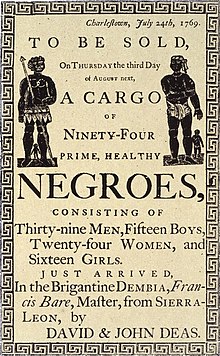




No comments:
Post a Comment